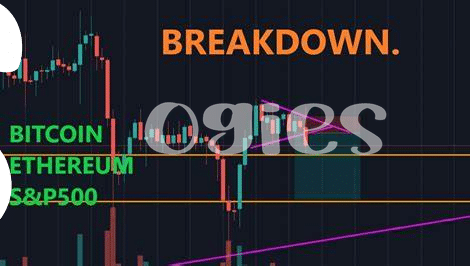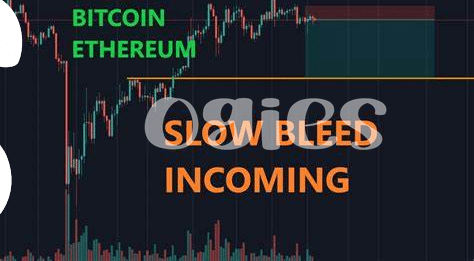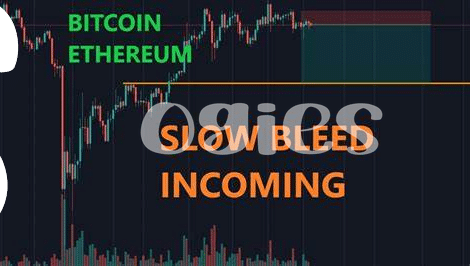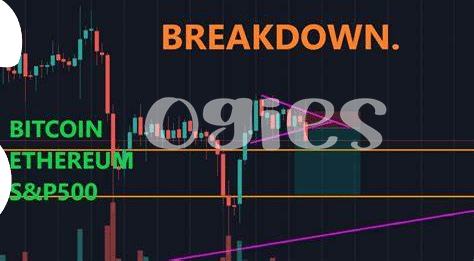Understanding the Basics of Moving Averages 📈

Imagine going on a treasure hunt where your map is a line that tells you where the treasure, in this case, Bitcoin or Ethereum, is headed. That’s essentially what moving averages do; they help chart a path through the adventurous world of trading by smoothing out the daily price fluctuations to give you a clearer, less chaotic picture of where the market might be going. Think of it like trail mix on a long hike; while each nut or raisin is tasty on its own, it’s the combination that keeps you going. Moving averages take all the daily closes, add them up, and then divide by the number of days, giving you a single line that shows a trend over time. So, whether the market’s going up, down, or sideways, this magical line helps you make more informed decisions without getting lost in the daily market noise.
| Term | Explanation |
|---|---|
| Daily Close | The last trading price of the day for Bitcoin or Ethereum. |
| Moving Average | A calculation to analyze data points by creating a series of averages of different subsets of the full data set. |
Identifying the Right Moving Average for You 🧭
Imagine you’re stepping into the world of trading Bitcoin and Ethereum, and you’ve got this tool, the moving average. It’s like having a magic wand that can help point out the path these cryptocurrencies might take. Now, picking the right moving average is a bit like choosing the best pair of shoes; what works wonderfully for one person might not suit another. The key here is understanding your trading journey – are you going to sprint, taking quick, short-term trades, or are you marathon-ready, looking for trends over a longer period? Your decision will guide you to the right moving average, whether it’s the swift glance of a 5-day average or the deep insight of a 200-day look.
As you embark on this quest to find the perfect moving average fit, remember, your goal is not just to follow the crowd. You’re looking for clues in the hustle and bustle of Bitcoin and Ethereum’s price movements to make your trading decisions sharper. For a more in-depth comparison of Bitcoin and Ethereum, especially in terms of small payment solutions, take a peek here: https://wikicrypto.news/empowering-the-unbanked-bitcoin-accessibility-case-studies. It’s an adventure where sometimes you might need the agility of a shorter moving average, or perhaps the steadiness of a longer one, depending on what the market is whispering.
Magic of Moving Averages in Bitcoin Trading 💫

In the world of Bitcoin trading, where the market can swing wildly from one direction to another, moving averages have emerged as a sort of magic wand for investors. Think of it like having a crystal ball, but instead of predicting the future, it smooths out past price actions to give you a clearer view of the trend’s direction. This simplicity is beauty in disguise, as it helps traders decide when to jump in with both feet or when to step back. Whether the price of Bitcoin is on a roller coaster ride up or a swift dive down, moving averages can help you see through the noise by highlighting the bigger picture. They act as a gentle guide, nudging you towards more informed decisions by filtering out the daily price fluctuations and emphasizing the trend over time. Armed with this knowledge, navigating the Bitcoin market becomes less about guesswork and more about strategy.
Ethereum Trading Tactics with Moving Averages 🌟

Ethereum, while sharing the cryptocurrency stage with Bitcoin, dances to its own rhythm when it comes to trading tactics, particularly through the use of moving averages. Imagine you’re trying to predict the best times to buy or sell Ethereum without getting lost in the complex charts. That’s where moving averages come in handy, simplifying this vast ocean of data into a single, flowing line that depicts the average price over a specific period. It’s like having a magical wand that reveals trends amidst the noise. For Ethereum traders, experimenting with different moving average lengths can be a game-changer. Shorter averages help capture quick, short-term opportunities, something akin to sprinting, while longer averages are your marathon runners, showing you the endurance trends. This technique is not just about following the line; it’s about reading the story it tells. When the Ethereum price crosses above a moving average, it’s like a green light signaling potential buying opportunities. Conversely, dipping below might suggest it’s time to hold off or sell. But here’s where it gets interesting: by studying this dynamic, traders can fine-tune their strategies in real-time, maximizing their chances for success. For those intrigued by the interplay between optimizing bitcoin payment channels for small transactions versus ethereum, the application of moving averages can further refine decision-making processes in the fast-paced world of crypto trading. However, it’s essential to remember that no magic formula exists. Success in Ethereum trading through moving averages requires patience, practice, and a bit of guts. By avoiding common pitfalls and learning from each trade, the path becomes clearer, leading traders through a journey of discovery, strategy, and hopefully, profit.
Combining Moving Averages for Stronger Signals 🤝
When we talk about making our trading strategies more robust, think of moving averages like ingredients in a winning recipe. It’s not just about using one type but mixing different ones to catch stronger signals in the crypto market. For instance, imagine using a short-term average to get the vibe of what’s happening now and a long-term one to understand the bigger picture. This mix can help you spot trends sooner and with more confidence, acting as a flashlight in a dark room, guiding your trading decisions in Bitcoin and Ethereum markets.
The beauty of combining moving averages lies in the clarity it brings to your trading table. Below is a simple guide to help visualize how different moving averages can work together:
| Type | Short-Term | Long-Term |
|---|---|---|
| Function | Grasps the latest market movements | Provides a broad market overview |
| Example | 10-day moving average | 50-day moving average |
| Benefits | Fast and responsive | Stable and less prone to rapid changes |
By paying attention to how these two interact—like a crossover where the short-term crosses above the long-term average—you’re essentially unlocking a new level of insight, giving you a clearer signal on when to enter or exit a trade. Avoiding common missteps becomes easier when you see the whole picture, making your trading journey less about guesswork and more about strategic decisions.
Common Mistakes to Avoid in Moving Average Trading 🚫

When diving into the world of moving averages for trading Bitcoin and Ethereum, it’s just like learning to ride a bike 🚴♂️: a mix of excitement and the possibility of skinned knees. One common oops moment? Putting on those financial biking gloves, aka relying too heavily on short-term moving averages, and ending up with a scraped knee when the market zigs instead of zags. It’s like focusing on the next few feet of the road without seeing the stop sign up ahead. Then there’s the trap of analysis paralysis – staring so hard at the lines on your trading chart 📊 that you miss out on the big picture. Imagine trying to read a book but only looking at one letter at a time – frustrating and not very helpful, right? Moreover, not setting your safety nets, or stop-loss orders, is akin to riding without a helmet – risky business if you hit a bump. To navigate these twists and turns without taking a spill, it’s smart to look into how Bitcoin and Ethereum can be a game changer, especially for those without access to traditional banking. For a deeper dive, explore empowering the unbanked with bitcoin: case studies versus ethereum to see how digital currencies are making waves beyond trading charts, offering a lifeline to those on the financial sidelines.
